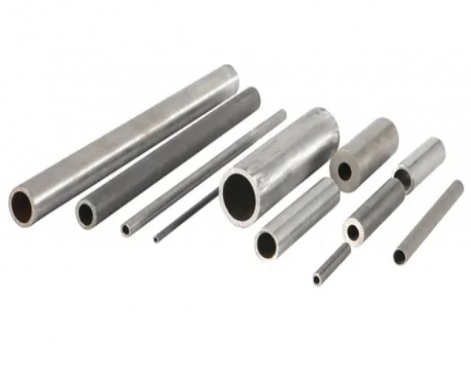ERW pipe hydrostatic test is a method to determine the strength and leakage prevention ability of ERW pipe. This is one of the easiest ways to detect leaks in pressure vessels. This test is one of the most reliable and safest methods for determining the integrity and reliability of newly manufactured ERW pipe, or before repairs, post-modification and commissioning phases. The hydraulic test uses water as the medium and uses the method of pressurizing the laid pressure pipeline after it is filled with water to check whether the pipeline is structurally damaged at a specified pressure value and whether it meets the specified allowable water seepage (or allowable pressure drop) Standard test.
1. Pre-test
Slowly increase the water pressure in the ERW pipe to the specified test pressure and stabilize it for 30 minutes. If the pressure drops during this period, water can be added to replenish the pressure. The replenishment pressure must not be higher than the test pressure; check whether there is any leakage at the ERW pipe interface, accessories, etc. Damage phenomenon; if the pressure test is stopped in time, find out the cause and take corresponding measures before retesting the pressure.

2. Main test phase
Stop injecting water to replenish the pressure and allow it to stabilize for 15 minutes; when the pressure drop does not exceed the allowable pressure drop value after 15 minutes, reduce the test pressure to the working pressure and maintain constant pressure for 30 minutes. Conduct an appearance inspection of the ERW pipe. If there is no leakage, the water pressure The test passed.
3. Precautions for ERW pipe hydraulic test
(1) The basis for determining whether the test is qualified is the allowable pressure drop value and the allowable water seepage value, which are determined according to the design requirements. When there are no requirements in the design, one or both of the values should be selected according to the actual situation. Only after passing the requirements can the ERW pipe be run with water.
(2) When measuring the actual water seepage amount in the hydraulic pressure test, the water injection method should be used.
(3) When two or more pipe materials are used, the tests should be carried out separately according to different pipe materials. If separate test conditions are not available, combined tests must be carried out, and if there are no requirements in the design, the most stringent standard among the test pipe materials should be used for the test.
(4) Test length Unless required by the design, the length of the ERW pipe for hydraulic pressure testing should not be greater than 1km; for pipes that cannot be tested in sections, it should be determined by the relevant engineering parties based on the specific conditions of the project.
(5) The water supply pipeline must pass the hydraulic pressure test, be flushed and disinfected before being connected to the grid, and can be put into operation only after the water quality reaches the standard.
1. Pre-test
Slowly increase the water pressure in the ERW pipe to the specified test pressure and stabilize it for 30 minutes. If the pressure drops during this period, water can be added to replenish the pressure. The replenishment pressure must not be higher than the test pressure; check whether there is any leakage at the ERW pipe interface, accessories, etc. Damage phenomenon; if the pressure test is stopped in time, find out the cause and take corresponding measures before retesting the pressure.

2. Main test phase
Stop injecting water to replenish the pressure and allow it to stabilize for 15 minutes; when the pressure drop does not exceed the allowable pressure drop value after 15 minutes, reduce the test pressure to the working pressure and maintain constant pressure for 30 minutes. Conduct an appearance inspection of the ERW pipe. If there is no leakage, the water pressure The test passed.
3. Precautions for ERW pipe hydraulic test
(1) The basis for determining whether the test is qualified is the allowable pressure drop value and the allowable water seepage value, which are determined according to the design requirements. When there are no requirements in the design, one or both of the values should be selected according to the actual situation. Only after passing the requirements can the ERW pipe be run with water.
(2) When measuring the actual water seepage amount in the hydraulic pressure test, the water injection method should be used.
(3) When two or more pipe materials are used, the tests should be carried out separately according to different pipe materials. If separate test conditions are not available, combined tests must be carried out, and if there are no requirements in the design, the most stringent standard among the test pipe materials should be used for the test.
(4) Test length Unless required by the design, the length of the ERW pipe for hydraulic pressure testing should not be greater than 1km; for pipes that cannot be tested in sections, it should be determined by the relevant engineering parties based on the specific conditions of the project.
(5) The water supply pipeline must pass the hydraulic pressure test, be flushed and disinfected before being connected to the grid, and can be put into operation only after the water quality reaches the standard.
Previous:Black steel pipe grade a vs b









